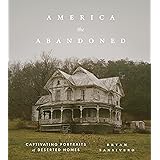The profound impact of light on our perception of space, color, and mood is often underestimated. As eloquently discussed in the accompanying video by Zahira Cury, an architect and lighting designer, nothing truly exists without light. It is the fundamental element that brings geometry, textures, and colors to life, dramatically influencing how we experience our environments. Understanding the core principles of interior lighting design is therefore not merely a technical exercise but an artistic endeavor that can profoundly transform any home or commercial space.
Often, individuals grapple with spaces that feel unwelcoming, too stark, or simply lack the desired ambiance. This challenge frequently stems from an underdeveloped or non-existent lighting plan. However, by delving into the characteristics of light sources and the strategic layering of illumination, anyone can learn to craft compelling and functional spaces. This guide expands upon the foundational concepts presented in the video, offering a more in-depth exploration of how to master home lighting design like a seasoned professional.
The Fundamental Role of Lighting in Interior Design
Lighting transcends mere visibility; it is an intrinsic component of a successful interior design scheme. It possesses the unique ability to manipulate perceptions of space, define focal points, and evoke specific emotional responses. Consequently, a well-executed lighting plan can make a small room feel expansive, a large room intimate, or a mundane area exceptionally inviting.
Furthermore, the interplay between light and matter dictates the true appearance of colors and textures. Without appropriate illumination, even the most exquisite finishes or vibrant hues can appear dull or distorted. Therefore, comprehensive interior lighting design considers both the aesthetic and functional requirements of a space, ensuring that every element is presented in its best light and that occupants feel comfortable and engaged.
Decoding Light Source Characteristics: A Deeper Dive
Before any fixtures are chosen, it is imperative to understand the inherent characteristics of the light sources themselves. Each bulb or lamp possesses distinct qualities that dictate its suitability for various applications. Mastering these technical aspects ensures that the chosen light perfectly complements the intended function and mood of a room.
Understanding Color Temperature (Kelvin)
Color temperature, measured in Kelvin (K) degrees, is a critical characteristic that describes the perceived warmth or coolness of a light source. This spectrum significantly influences the atmosphere and utility of a space. For instance, lower Kelvin values indicate warmer light, while higher values correspond to cooler light, each with specific applications.
- Warm Light (2700K-3000K): This range emits a soft, yellowish glow reminiscent of incandescent bulbs or candlelight. It is ideal for creating a cozy, calm, and inviting atmosphere, making it perfect for bedrooms, living rooms, family rooms, and dining areas where relaxation and intimacy are desired. Such lighting promotes comfort and warmth, encouraging occupants to unwind.
- Neutral/Soft White Light (3500K-4500K): Offering a balanced and clean illumination, this temperature is excellent for areas requiring clarity without the starkness of cool light. Kitchens and bathrooms benefit greatly from neutral white light, as do home offices or craft spaces where tasks require good visibility and accurate color rendition. It supports focus and functionality without being overly stimulating.
- Cool Light (5000K+): Emitting a crisp, bluish-white light similar to daylight, cool light is highly stimulating and invigorating. While generally less suitable for residential interiors due to its clinical appearance, it is perfectly adequate for commercial environments such as offices, hospitals, or retail stores where alertness and maximum visibility are paramount. This spectrum enhances concentration and reduces visual fatigue in demanding work settings.
Mastering Beam Angle for Targeted Illumination
The beam angle refers to the spread of light emitted from a lamp. Selecting the correct beam angle is crucial for directing light precisely where it is needed, whether for general illumination or to highlight specific elements. Varying beam angles allow for versatile and dynamic home lighting design.
- Spot Angle (Narrow Beam): Typically ranging from 10 to 30 degrees, a narrow beam angle creates a concentrated pool of light. This is the optimal choice for accent lighting, used to highlight specific treasure objects, artwork, architectural details, or collections. Recessed spot ceiling lights and track lights frequently employ narrow beams to create dramatic focal points and add depth to a room.
- Flood Angle (Wide Beam): With angles generally exceeding 40 degrees, a wide beam angle provides a more general and softer light distribution. This is ideal for illuminating a broad area with uniform light, suitable for ambient lighting in larger rooms or hallways. Fixtures such as flush-mounted ceiling lights, pendant lights with diffusers, or certain types of recessed downlights often utilize wide beams to wash walls or floors with a comfortable, even glow.
Lumens: The Measure of Brightness
Lumens quantify the total amount of visible light emitted from a light source, providing a direct measure of its brightness. Unlike watts, which measure energy consumption, lumens tell you how much light you are actually getting. Therefore, when selecting bulbs, the lumen rating should be the primary consideration to ensure adequate illumination for a space.
The higher the lumen rating, the brighter the lamp will appear. To choose the appropriate lumen level, consider both the dimensions of the room and the activities planned for that space. For instance, a small powder room will require far fewer lumens than a large kitchen or a living room. For ambient lighting, a general guideline is 1,500-3,000 lumens for a typical living room, whereas a kitchen might demand 5,000-10,000 lumens for comprehensive task illumination. Understanding lumens empowers you to select bulbs that provide sufficient light without being either too dim or overpoweringly bright.
The Art of Layered Lighting: Crafting Dynamic Spaces
A truly professional home lighting design avoids relying on a single light source. Instead, it meticulously blends different types of lighting to create depth, contrast, and visual interest—a concept known as layered lighting. This approach ensures that a space is not only well-lit but also aesthetically pleasing and highly adaptable to various moods and functions.
Ambient Lighting: The Foundation of Illumination
Ambient lighting serves as the base layer of light in any room, providing overall illumination that allows for safe and clear movement. Its main purpose is to establish a general and uniform light level, setting the foundational tone for the space. Typically, ambient light is soft and diffused, preventing harsh shadows and glare.
This fundamental layer can be incorporated through various fixtures, including ceiling-mounted fixtures, recessed lights that direct light downwards, or even LED strips washing ceilings and walls with a gentle glow. Pendants that bounce light off ceilings and walls also contribute to a comfortable ambient illumination. The versatility of ambient lighting is further enhanced by dimmers, which allow for adjusting the light intensity to suit different times of day or activities.
Accent Lighting: Highlighting Focal Points with Precision
Accent lighting is designed to draw attention to specific objects, features, or areas, transforming them into captivating focal points within a room. This layer is crucial for adding style, contrast, and drama, enriching the overall interior design. If a room feels somewhat lacking, strategic accent lighting can often be the missing element.
Technically, accent lights are typically three times as bright as the ambient light level to ensure they effectively highlight their intended targets without being overwhelmed. Effective options include recessed spot ceiling lights, track lights, or wall-mounted picture lights, all of which can be angled and directed to illuminate artwork, architectural details, cherished furnishings, or plant displays. By creating defined shadows and highlights, accent lighting adds depth and character to the entire space, transforming it from merely functional to truly extraordinary.
Task Lighting: Functionality Where You Need It Most
As its name suggests, task lighting is specifically aimed at illuminating a particular area where a task or activity is performed. Its purpose is to provide concentrated, brighter light precisely where it is needed, thereby preventing eye strain and enhancing efficiency. This type of lighting is often brighter than ambient light, ensuring optimal visibility for specific actions.
Examples of effective task lighting solutions include under-cabinet lighting in kitchens for food preparation, desk lamps for reading or writing, and vanity lights in bathrooms for grooming. Pendants positioned over a kitchen island or dining table also serve as excellent task lighting for eating or working. Incorporating task lighting intelligently not only provides essential functionality but also contributes to the ergonomic comfort and practical utility of any interior space.
Beyond the Basics: Integrating Aesthetics and Function
A truly successful home lighting design seamlessly blends functionality with aesthetic appeal. The selection of lighting fixtures goes beyond their light output; it also involves choosing pieces that perfectly complement the existing or desired interior design style. A fixture should not only provide appropriate illumination but also act as a decorative element, reinforcing the room’s overall theme.
When considering fixtures, think about their form, material, and how they harmonize with other decor elements. For instance, sleek, minimalist fixtures suit a contemporary aesthetic, while ornate chandeliers might complement a traditional design. Furthermore, professionals often consider the Color Rendering Index (CRI), which indicates how accurately a light source reveals true colors, especially important for art studios or dressing areas. Incorporating smart lighting systems can also add another layer of functionality, offering dynamic control over brightness, color temperature, and even automated schedules, allowing for unparalleled versatility in any interior lighting design.











